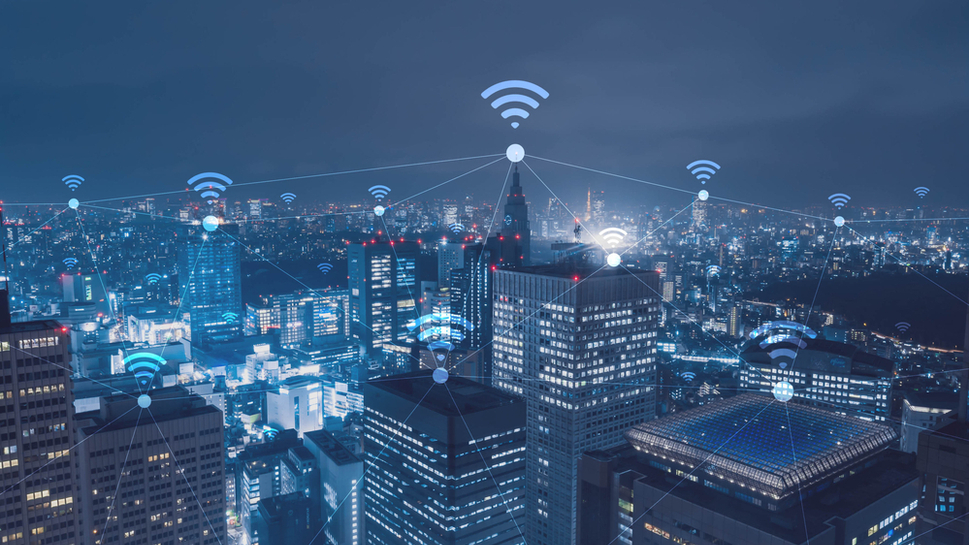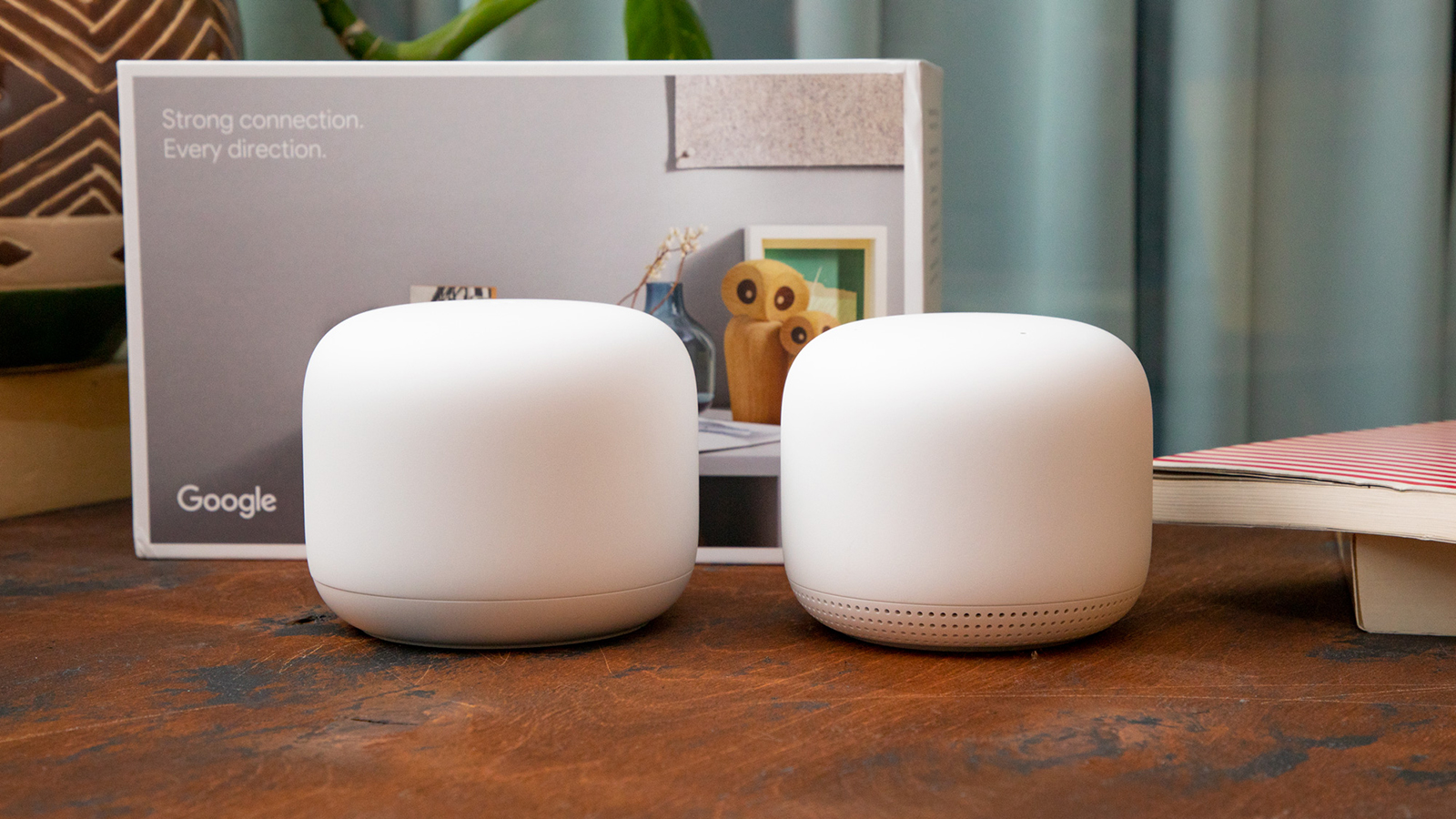Wi-Fi 6 vs Wi-Fi 6E: which offers a better wireless experience?
We look at Wi-Fi 6 vs Wi-Fi 6E for your home or business network

When it comes to Wi-Fi 6 vs Wi-Fi 6E, it's easy to get turned around a bit, even if you're an IT professional. With the new Wi-Fi naming convention just being adopted a few years ago, Wi-Fi 6E might sound like a return to the bad old days of alphabet soup Wi-Fi classifications, but that isn't the case here.
Wi-Fi 6E is an enhanced version of Wi-Fi 6 that stretches into the 6GHz radio spectrum. This means faster speeds, more connections, and less interference from congestion. You might need new equipment to take advantage of this new spectrum though, as even the best Wi-Fi 6 routers can't access this new spectrum if they aren't built for Wi-Fi 6E.
What's more, it's not enough to have the best wireless router, the best computer, the best laptop, the best tablet, or even the best phone isn't going to be able to take advantage of Wi-Fi 6E if they aren't built to do so.
Given the possible confusion between the two versions of Wi-Fi 6, we reached out to the Wi-Fi Alliance, the consortium responsible for the Wi-Fi standard to help clarify the benefits of Wi-Fi 6E vs Wi-Fi 6 to help you make the right choice when it comes to buying your next router and making sure that all of your equipment is primed to take advantage of all that 6GHz has to offer.
Wi-Fi 6 vs Wi-Fi 6E: does 6GHz make that much of a difference?

For many Wi-Fi users, congestion is the biggest problem they face. If there are too many devices trying to connect to a single Wi-Fi network or if there are too many Wi-Fi networks in the same area, that’s when constant slow down or disconnections can occur.
However, the US Federal Communications Commission (FCC) voted in 2020 to open up space in the 6GHz band for Wi-Fi communication, which means they're a lot more open airwaves that Wi-Fi 6E routers can use to broadcast a signal and a much smaller chance of being dropped trying to connect at home, in the office, or at the coffee shop.
The industry name for this is Wi-Fi 6E, as those signals provide the same improvements that Wi-Fi 6 did – higher performance, lower latency, and faster data rates – but now with the added space of 6GHz. So basically, while both 6E and 6 offer the same features, 6E has far more space to play in, which means that you’ll be getting a far better internet experience with it.
According to the Wi-Fi Alliance, "the additional spectrum capacity used by Wi-Fi 6E devices enables more Wi-Fi innovation and delivers valuable contributions to consumers, businesses, and economies."
Wi-Fi 6 vs Wi-Fi 6E: Price
As the Wi-Fi Alliance told TechRadar, "There are more than 200 Wi-Fi 6E products available, and many of those products now include Wi-Fi 6E routers." So there's a wide variety of products currently on the market.
Currently, routers that support Wi-Fi 6E are considered top of the line, which means they tend to carry a hefty price tag. If you’re thinking of upgrading your setup to put out the best and least congested Wi-Fi signal, you’ll be coughing up a good bit of money for one.
One of the cheapest models out there, the Linksys Hydra Pro, will still set you back by about $300. So unless you're a gamer looking for the best gaming router or someone who needs a fast and uninterrupted internet connection, it might be prudent to hold back on a purchase for now.
Meanwhile, Wi-Fi 6 routers are about $250 on average, with some coming in at half the price, and the signal is the same speed as 6E. So if dropped signals aren’t an issue for you but the price is, then these routers would be a much better option.
Wi-Fi 6 vs Wi-Fi 6E: Coverage

What’s interesting is that 6 GHz is already in use outdoors by several operators like utility companies, public safety agencies, and television broadcasters. So the important question is how indoor coverage will be impacted by the change.
This is most likely where the most significant impact will be seen. For those who upgrade to Wi-Fi 6E, consumers will experience the kind of wide coverage that’s only really seen in trade shows and conventions. The Wi-Fi Alliance confirmed this, stating that "Wi-Fi 6E routers can best support dense, multi-device Wi-Fi networks. This can include public venues, enterprises, and even now more commonly, crowded home networks."
No more internet blind spots in your home where the connection strength drops severely since the spectrum that 6E inhabits is far less congested. This means a faster and more even spread of a signal across an entire household, so anyone can be anywhere and experience the same quality connection.
Wi-Fi 6, depending on where you are in a household or other space, can have significant differences in terms of signal strength and quality depending on where you are. If you’re in a smaller living space, this tends to have less of an impact, but larger homes or office spaces will feel these effects more often. This is especially true when running high-performance tasks like video conferencing or streaming.
Wi-Fi 6 vs Wi-Fi 6E: Speed
Wi-Fi 6E is incredibly fast and offers consumers a clean frequency that, according to The Wi-Fi Alliance, provides "multi-gigabit speeds with 1,200 MHz of open airwaves in the 6 GHz band." This means that 8K videos, game streaming, and more will become more commonplace as 6E coverage expands.
Though speed is technically not the correct definition in the case of Wi-Fi 6 vs Wi-Fi 6E. The latter isn’t actually faster than the former, as they both offer the same features and move at the same speeds. But because 6E has its own open airwaves compared to other types of Wi-Fi, there’s far less congestion which means that the signal is able to take full advantage of those airwaves.
Connectivity will continue to be faster and more powerful with the ability to download a gigabit per second under the 6E connection. Of course, the specifics will depend on the internet provider and other factors, but the possibilities are there.
With Wi-Fi 6, connections are technically just as fast as 6E. However, since it often has to play nice with other nearby signals and any devices trying to connect to the same signal, this can cause reductions in speed and other issues. Depending on how you use Wi-Fi, this can be either a minor inconvenience or a major issue. This means in some cases you may not need to upgrade from 6 at all.
Wi-Fi 6 vs Wi-Fi 6E: Connections
This is also where Wi-Fi shines, as the quality of the connection is what makes it feel much faster than 6, even though they’re the same speed. Because 6E occupies a larger spectrum than other Wi-Fi signals, it essentially has no competition at the top end of the spectrum and therefore is able to fully utilize its features in all that extra space.
This also means that slow or dropped signals are a rarity, so the odds of your device losing connection in the middle of an important task are much lower. Stability is a feature even more important than pure speed for many people, and this is where 6E truly excels.
According to the Wi-Fi Alliance, "With up to seven additional super-wide 160-MHz channels available, Wi-Fi 6E devices deliver greater network performance and support more Wi-Fi users at once, even in very dense and congested environments."
Though if you don’t have many devices or live near other competing signals in the area, then Wi-Fi 6 makes more sense as your choice since you likely won’t notice much of a difference between the two.
Are you a pro? Subscribe to our newsletter
Sign up to the TechRadar Pro newsletter to get all the top news, opinion, features and guidance your business needs to succeed!

Named by the CTA as a CES 2023 Media Trailblazer, Allisa is a Computing Staff Writer who covers breaking news and rumors in the computing industry, as well as reviews, hands-on previews, featured articles, and the latest deals and trends. In her spare time you can find her chatting it up on her two podcasts, Megaten Marathon and Combo Chain, as well as playing any JRPGs she can get her hands on.